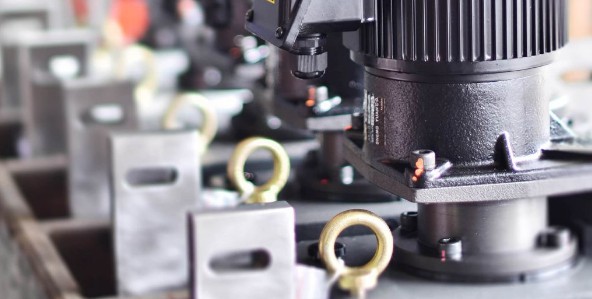The servo system is the link between the numerical control device and the machine mainframe. It is used to receive the feed pulse or feed displacement information from the numerical control device interpolator. After a certain signal conversion and voltage and power amplification, the servo motor drives the transmission mechanism. Finally, it translates into the linear or rotary displacement of the machine table relative to the tool. In order to improve the performance of CNC machine tools, high requirements are placed on the feed servo system for machine tools. Due to the different processing tasks performed by various CNC machine tools, the requirements for the feed servo system are not the same. The following are common faults of the servo system. Vibratory Separator,Vibratory Sieve,Vibrating Sifter Sieve,Vibratory Sieving Xinxiang Zhenying Mechanical Equipment Co., Ltd , https://www.zhenyinggroup.com
1. Overtravel When the feed motion exceeds the software limit set by the software or the hard limit set by the limit switch, an overtravel alarm will occur and the alarm content will be displayed on the CRT, according to the CNC system specification. , you can eliminate the fault, lift the alarm.
2. Overload When the load of the feed motion is too large, frequent positive and negative movements and poor lubrication of the drive chain can cause overload alarms. Alarms such as servo motor overload, overheating or overcurrent are normally displayed on the CRT. At the same time, the information on the drive unit overload, over-current, etc. will be indicated on the feed drive unit, indicator or digital tube in the power cabinet.
3, turbulent movements appear in the feed phenomenon:
1 The speed signal is unstable, such as speed measuring device failure, speed feedback signal interference, etc.;
2 speed control signal is unstable or interfered;
3 Terminals have poor contact, such as loose screws.
When swaying occurs at the commutation moments from the positive direction movement and the reverse direction movement, it is generally caused by the backlash of the feed transmission chain or the excessive gain of the servo system.
4. Crawling occurs in the starting acceleration section or low-speed feed, which is generally caused by factors such as poor lubrication of the feed chain, low gain of the servo system, and excessive applied load. In particular, attention should be paid to the fact that couplings used for the coupling of servomotors and ball screws are not synchronized with the rotation of the ball screw due to loose coupling or defects of the coupling itself, such as cracks. Gives the sport a sudden, slow, and creeping phenomenon.
5. Machine vibration occurs When the machine tool runs at a high speed, vibration may occur and an over-current alarm may occur. The machine tool vibration problem is generally a speed problem, so the speed loop should be looked for; and the entire adjustment process of the machine tool speed is completed by a speed regulator. That is, all speed-related problems should be found in the speed regulator, and therefore the vibration problem. Look for a speed regulator. Mainly from the given signal, feedback signal and speed regulator itself to find the fault.
6, the servo motor does not turn the numerical control system to feed the drive unit in addition to the speed control signal, but also has the enable control signal, is generally the DC 24V relay coil voltage. The servo motor does not turn. Common diagnostic methods include:
1 check whether the CNC system has speed control signal output;
2 Check that the enable signal is on. Observe I/O state through CRT, analyze machine tool PLC ladder diagram (or flow diagram), in order to confirm the starting condition of the feed axis, if lubrication, cooling,etc. are satisfied;
3 For servo motor with electromagnetic brake, check whether the electromagnetic brake is released;
4 feed drive unit failure;
5 Servo motor failure.
7. Position error When the servo axis movement exceeds the position tolerance range, the NC system will generate alarms with excessive position error, including following error, contour error and positioning error. The main reasons are:
1 The tolerance range set by the system is small;
2 Improper setting of servo system gain;
3 position detection device has pollution;
4 feed chain cumulative error is too large;
5 When the headstock moves vertically, balancing devices (such as balance cylinders, etc.) are unstable.
8. Drift When the command value is zero, the axis still moves, causing position error. It is eliminated by error compensation and zero-speed adjustment of the drive unit.
9, mechanical transmission components of the gap and loose in the CNC machine tool feed chain, often due to the drive element of the key slot and the gap between the keys so that the drive is damaged, therefore, in addition to the design of a careful choice of key connection agencies, Processing and assembly must be rigorously investigated. When assembling the ball screw, the preload of the bearing should be checked to prevent axial movement of the ball screw, as clearance is also another cause of a significant transmission gap.